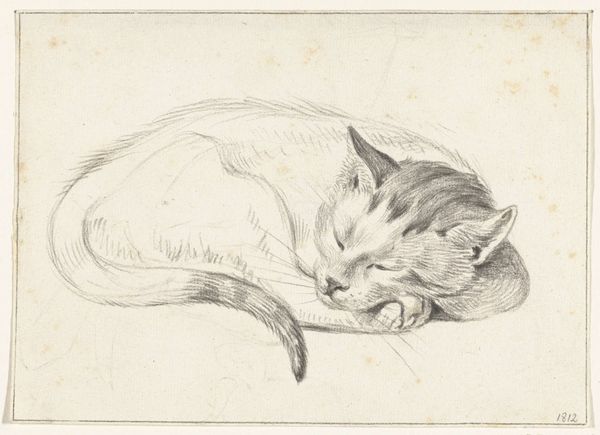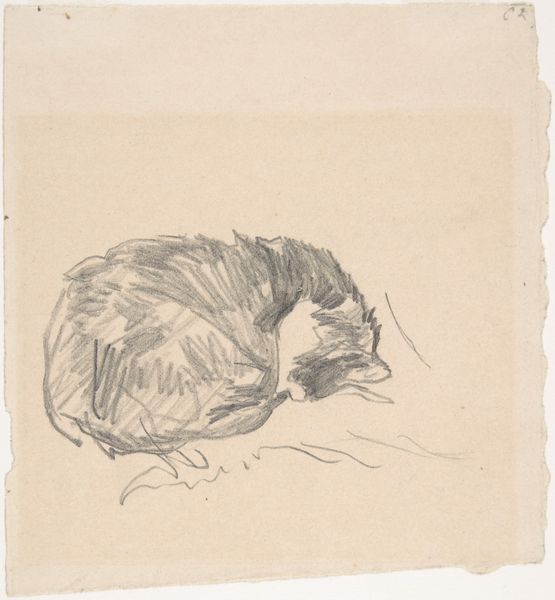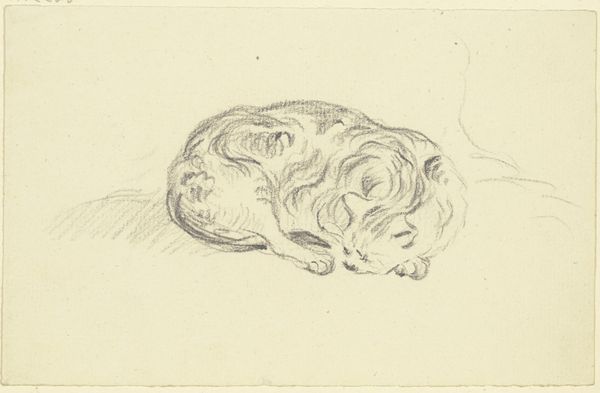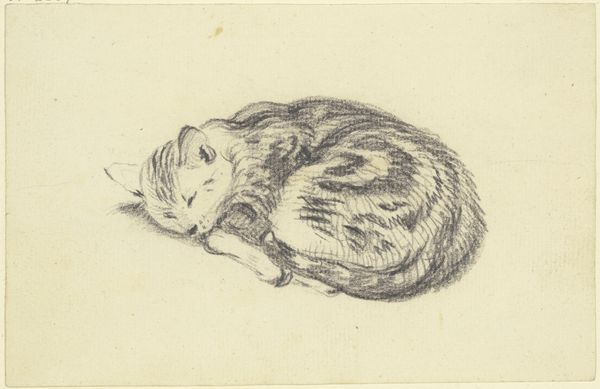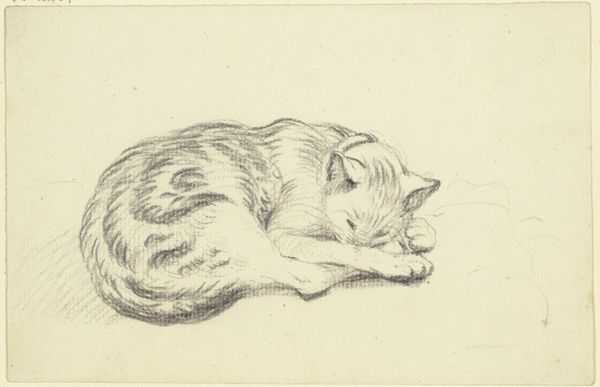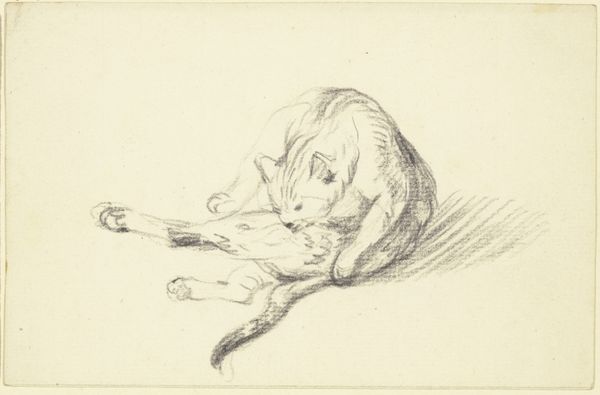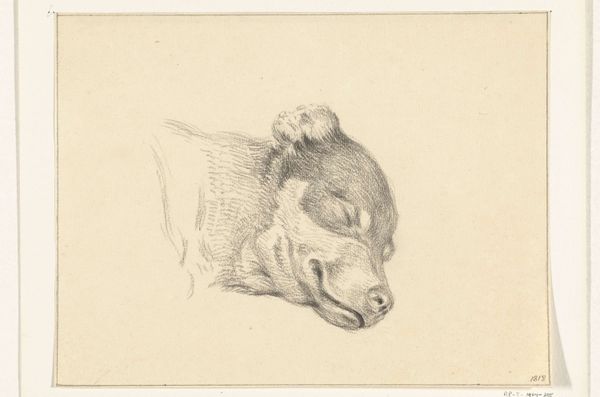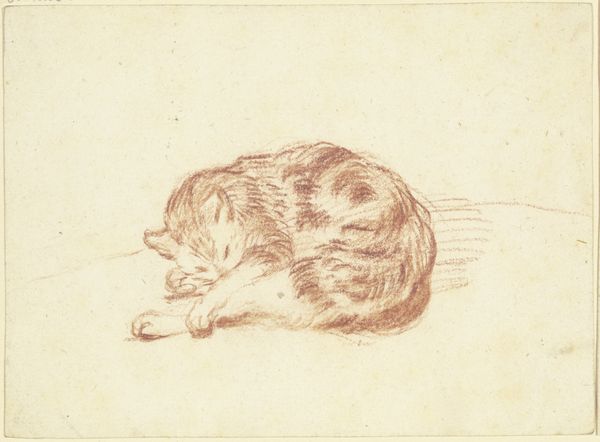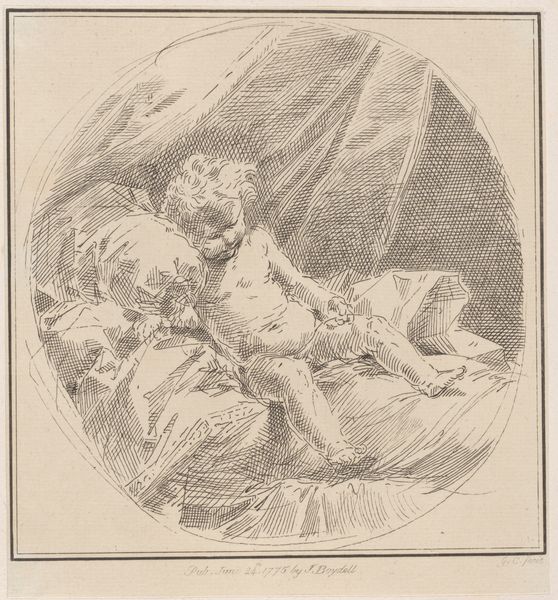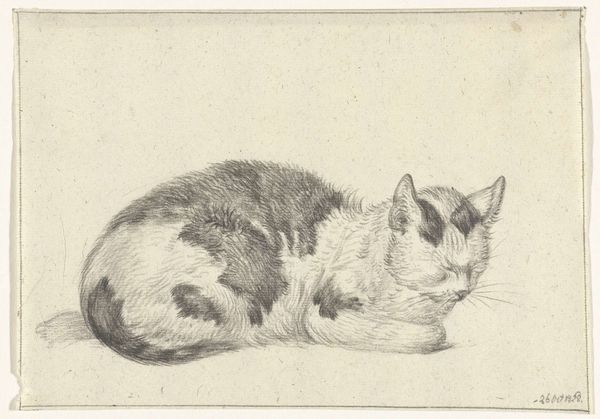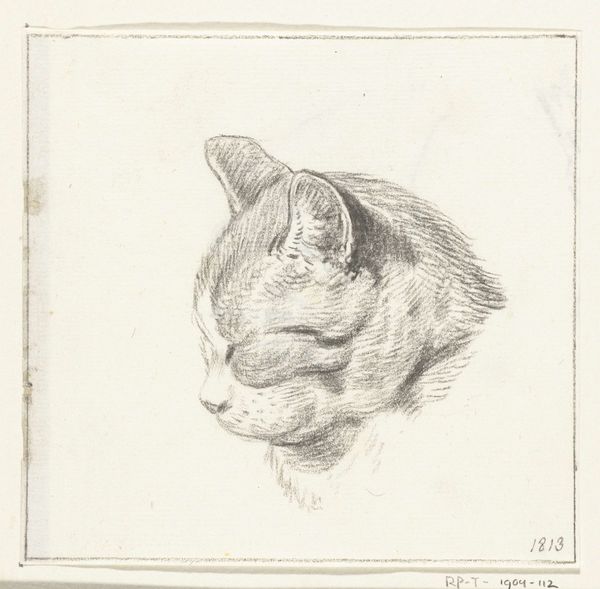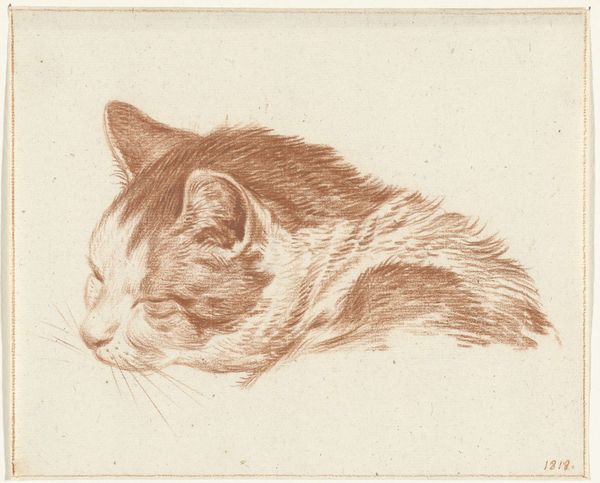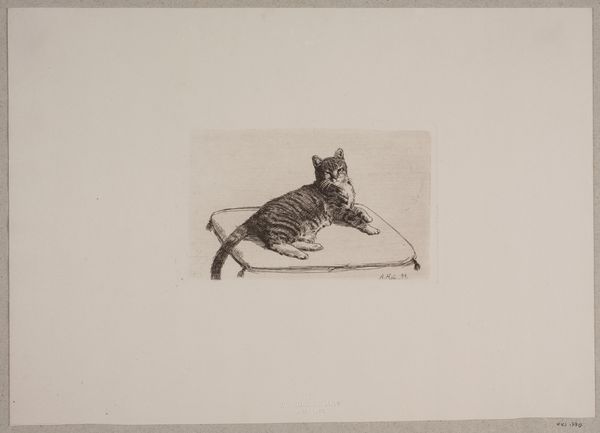
drawing, etching
#
portrait
#
drawing
#
etching
#
dog
#
romanticism
#
realism
Dimensions: height 86 mm, width 95 mm
Copyright: Rijks Museum: Open Domain
Curator: "Kop van een slapende hond," or "Head of a Sleeping Dog," an etching likely made between 1792 and 1810 by Wouter Johannes van Troostwijk. It's currently held here at the Rijksmuseum. Editor: Immediately, I’m struck by the tenderness of this small piece. It captures such a peaceful, vulnerable moment. The delicate lines convey a sense of quiet intimacy. Curator: It's interesting that you describe it as intimate. Animal portraiture was increasingly popular during this period. With changing social and political landscapes, animals began to function as stand-ins, representing shifting ideals of loyalty and domesticity. Dogs, in particular, symbolized these virtues. Editor: That’s fascinating. So, it's not just a simple depiction of a sleeping dog, but a potential reflection of broader societal values? Were certain breeds favored to reinforce specific ideals? Curator: Absolutely. Specific breeds carried particular connotations tied to status or social standing. While it’s hard to pinpoint the exact breed in this etching, the dog's comfortable sleep could be seen as representative of bourgeois comfort and stability, especially against the backdrop of revolutionary turmoil. Editor: That contextual layer changes my understanding. The etching style, quite realistic, gives the sense of seeing an actual animal; combined with those cultural markers, one is now asked to consider one's position as a privileged, and safe viewer. Curator: Exactly. Moreover, the distribution of such prints played a crucial role in disseminating these values amongst the broader public. Think of this etching not just as art, but as a piece of visual culture that actively participated in shaping contemporary society. Editor: So, an ostensibly innocuous image could actually be interpreted as a reflection of dominant social norms, perhaps even an endorsement of a particular way of life. Food for thought indeed. Curator: Precisely! And perhaps prompts us to question what seemingly simple animal images convey today. Editor: Yes, definitely complicates how we look and assign significance. This small piece has sparked more discussion than I'd initially expected. Thank you.
Comments
No comments
Be the first to comment and join the conversation on the ultimate creative platform.
